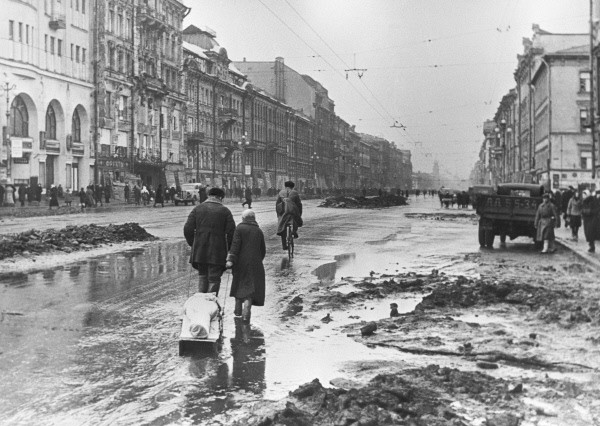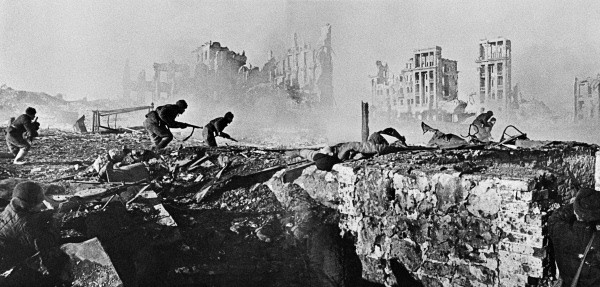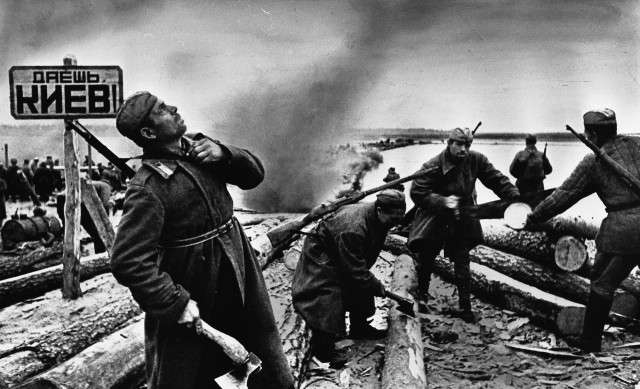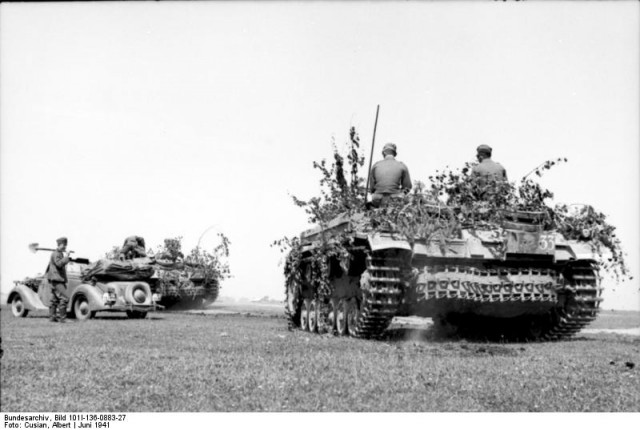Apr 28, 2015
5. The battles for Kursk, 1943
 2nd SS Panzer Division soldiers, Tiger I tank, during the battle [Via]
2nd SS Panzer Division soldiers, Tiger I tank, during the battle [Via]
The Battles of Kursk were fought on the Eastern front near the town of Kursk in the Soviet Union. It started on July 5th 1943 and ended on August 23rd 1943.
The Germans launched the first offensive which was countered by two Soviet counter-offensives. For the Germans, the battle represented the final strategic offensive they were able to mount in the east. For the Soviets, the victory gave the Red Army the strategic initiative for the rest of the war.
The Germans hoped to weaken the Soviet offensive potential for the summer of 1943 by cutting off a large number of forces, that they anticipated would be in the Kursk salient assembling for an offensive.
The Soviets had intelligence of the German intentions, aware months in advance, that the attack would fall on the neck of the Kursk salient, the Soviets built a defence in depth designed to wear down the German Forces.
Over 6,132,000 soldiers were engaged in this battle, total casualties are estimated around 1,038,862 (16,9%)
4. Siege of Leningrad
 “In besieged Leningrad”. Leningradians on Nevsky avenue during the siege. [Via]
“In besieged Leningrad”. Leningradians on Nevsky avenue during the siege. [Via]
The Siege of Leningrad was a prolonged military operation undertaken by the German Army Group North against Leningrad—historically and currently known as Saint Petersburg—in the Eastern Front theatre of World War II.
The siege started on 8 September 1941, when the last road to the city was severed. Although the Soviets managed to open a narrow land corridor to the city on 18 January 1943, the siege was finally lifted on 27 January 1944, 872 days after it began. It was one of the longest and most destructive sieges in history and overwhelmingly the most costly in terms of casualties.
Casualties are estimated between 1,117,000 and 4,500,000
3. Battle for Stalingrad 1942 – 1943:
 Soviet soldiers attack a house, February 1943 [Via]
Soviet soldiers attack a house, February 1943 [Via]
The Battle of Stalingrad began on 23 August 1942 when the German offensive to capture Stalingrad with the 6th Army began. The attack was supported by intensive Luftwaffe bombing that reduced much of the city to rubble. The fighting degenerated into building-to-building fighting, and both sides poured reinforcements into the city. By mid-November 1942, the Germans had pushed the Soviet defenders back at great cost into narrow zones generally along the west bank of the Volga River.
On 19 November 1942, the Red Army launched Operation Uranus, a two-pronged attack targeting the weaker forces protecting the German 6th Army’s flanks. The Axis forces on the flanks were overrun and the 6th Army was cut off and surrounded in the Stalingrad area. Heavy fighting continued for another two months. By the beginning of February 1943, the Axis forces in Stalingrad had exhausted their ammunition and food. The remaining elements of the 6th Army surrendered.
Casualties are estimated from 1,250,000 to 1,798,000.
2. Dniepr Campaign, 1944
 Soviet soldiers preparing rafts to cross the Dnieper (the sign reads “Onwards to Kiev!”) [Via]
Soviet soldiers preparing rafts to cross the Dnieper (the sign reads “Onwards to Kiev!”) [Via]
The Battle of the Dnieper took place in 1943 on the Eastern Front of the World War II. It was one of the largest operations in the World War II, involving almost 4,000,000 troops on both sides and stretching on a 1,400 kilometres long front.
During its four-month duration, the eastern bank of the Dnieper was recovered from German forces by five of the Red Army’s fronts, which conducted several assault river crossings to establish several bridgeheads on the western bank. Subsequently, Kiev was liberated in the Second battle of Battle of Kiev.
Casualties range from a low estimate of 1,582,000 to up to 2,480,000.
1. Operation Barbarossa
 Self propelled guns enter Russia in June 1941 [Via]
Self propelled guns enter Russia in June 1941 [Via]
Operation Barbarossa, the invasion of the USSR by Nazi Germany lasted from June 22nd until December 5th 1941. Over the course of the operation, about four million soldiers of the Axis powers invaded Soviet Russia along a 2,900 km front, making it the largest invasion in the history of warfare. In addition to troops, the Germans employed some 600,000 motor vehicles and between 600–700,000 horses.
Operationally, the Germans won resounding victories and occupied some of the most important economic areas of the Soviet Union, mainly in Ukraine, while sustaining heavy casualties. Despite these successes, the German offensive stalled on the outskirts of Moscow and was then pushed back by a Soviet counter offensive without taking the city. The Germans would never again mount a simultaneous offensive along the entire strategic Soviet-German front. The Red Army repelled the Wehrmacht’s strongest blow and forced Germany into a war of attrition, which it was unprepared for.
Around 6,480,000 soldiers were engaged in this battle, casualties range from a low estimate of 1,400,000 (21,6%) to up to 5,000,000 (77,1%).
Authors Note:
The casualty figures this Wikipedia page were used and refined where possible using the relevant Wikipedia pages. Prisoners taken are not part of the number of casualties, only killed, wounded and or missing.
No comments:
Post a Comment